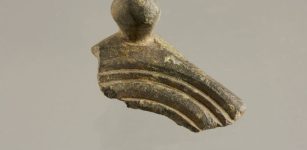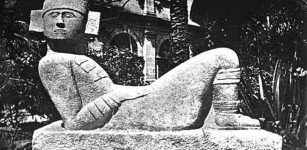Humans Lived In The Qal-e Kord Caves 400,000 Years Ago – Oldest Settlement In Iran Found?
Conny Waters - AncientPages.com - The oldest human settlement in Iran discovered so far is announced by the team co-led by Iranian archaeologist Hamed Vahdati and French paleoanthropologist Gilles Berillon.
The site Qal-e Kord Caves is located in Avaj county of Qazvin province.
As the cave’s culture materials are so old, it was not possible to date them using the Carbon-14 dating method, which can only determine ages up to 45,000 years old, so electron spin resonance (ESR) and uranium/thorium methods were used instead, ILNA quoted Vahdati as saying.
Credit: Tehran Times
According to preliminary results, the cave is over 400,000 years old, making it the oldest human settlement in the country, he added, according to Tehran Times.
Stone tools found in this cave, along with the mentioned age, indicate that the cave was occupied by other human species before the Neanderthal man, such as Heidelberg man and possibly Homo erectus, or ‘upright man,’ he explained.
So far, two types of extinct prehistoric horses, deer, brown bear, and rhinoceros have been identified in the animal remains found in the cave, he mentioned.
Last year, the tourism ministry announced that a fossilized tooth, previously found in the cave, could date back 100,000 years.
The organ was examined in two laboratories in France and the United States, and the results of radiocarbon dating experiments showed that it relates to the oldest-known Neanderthal civilization in Iran.
In November 2018, the first season of the joint Iran-France archeological exploration led to the discovery of over 6,000 cultural pieces in the area. It also yielded bone remains of horses, deer, bears, and many stone tools belonging to the Middle Paleolithic period (between 200,000 to 40,000 years ago).
In the second season of the project in 2019, archaeologists discovered the remains of a horse, which they believed to be hunted by Neanderthals in the cave.
A 2019 study published in the Journal of Human Evolution suggests that Neanderthals were roaming at the Iranian Zagros Mountain sometimes between 40 to 70 thousand years ago.
Until the late 20th century, Neanderthals were regarded as genetically, morphologically, and behaviorally distinct from living humans. However, more recent discoveries about this well-preserved fossil Eurasian population have revealed an overlap between living and archaic humans.
Neanderthals lived before and during the last Ice Age of the Pleistocene in some of the most unforgiving environments ever inhabited by humans. They developed a successful culture, with a complex stone tool technology, that was based on hunting, some scavenging, and local plant collection.
Their survival during tens of thousands of years of the last glaciation is a remarkable testament to human adaptation.
Written by Conny Waters - AncientPages.com Staff Writer





















